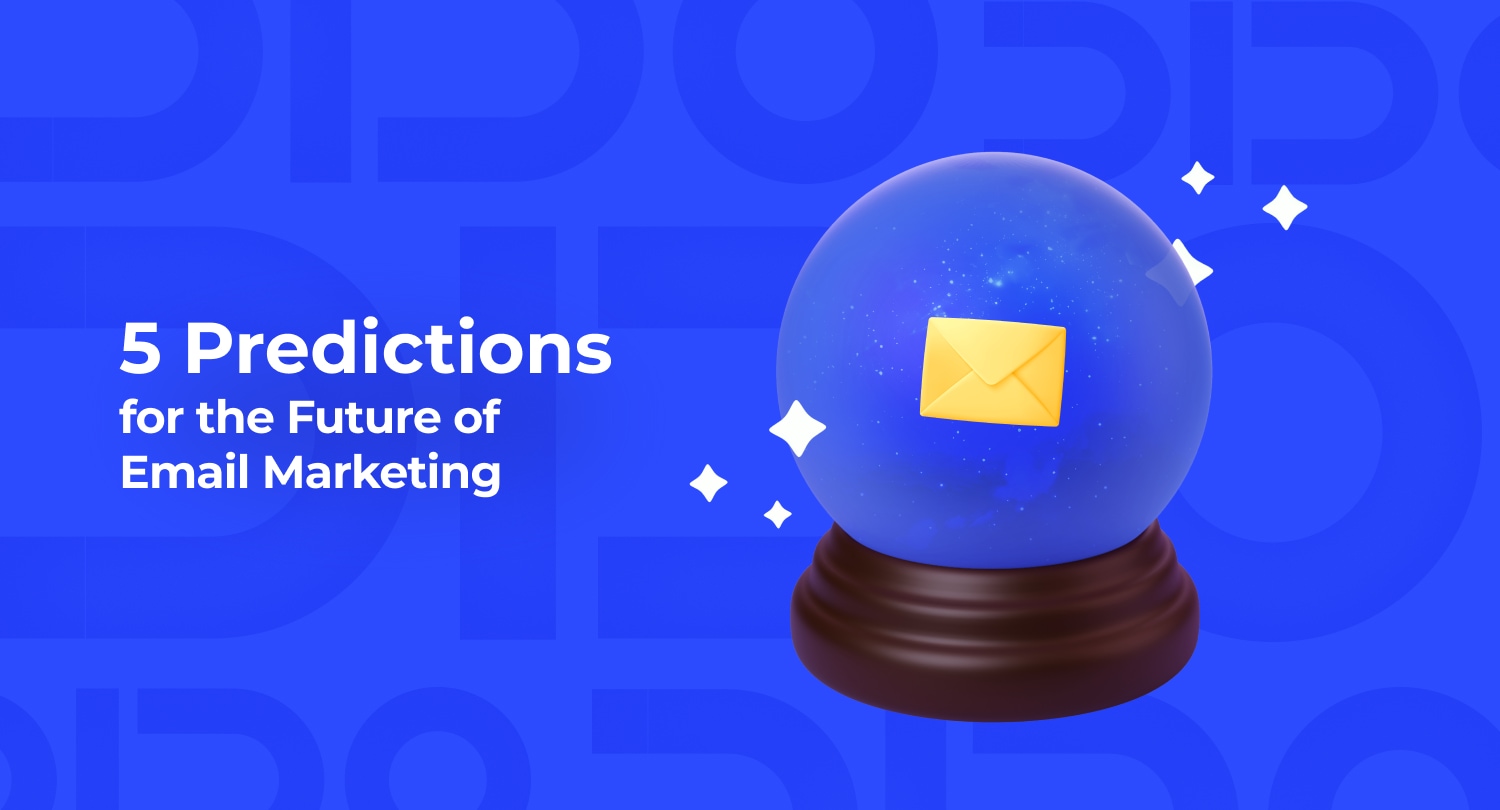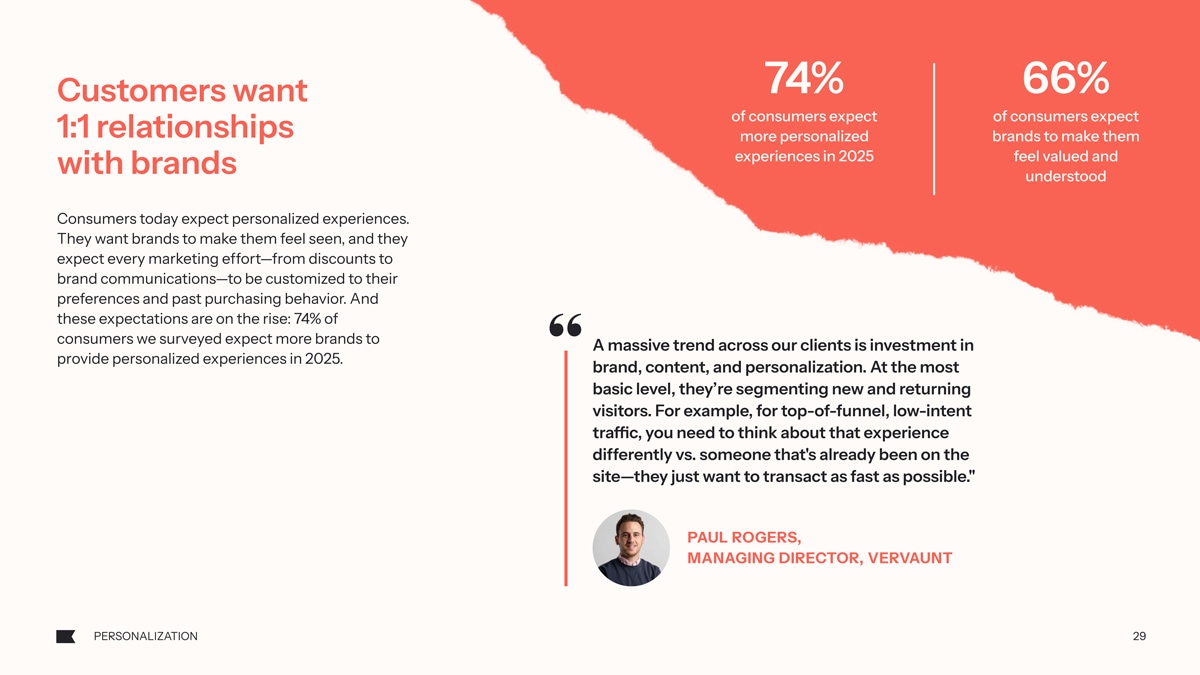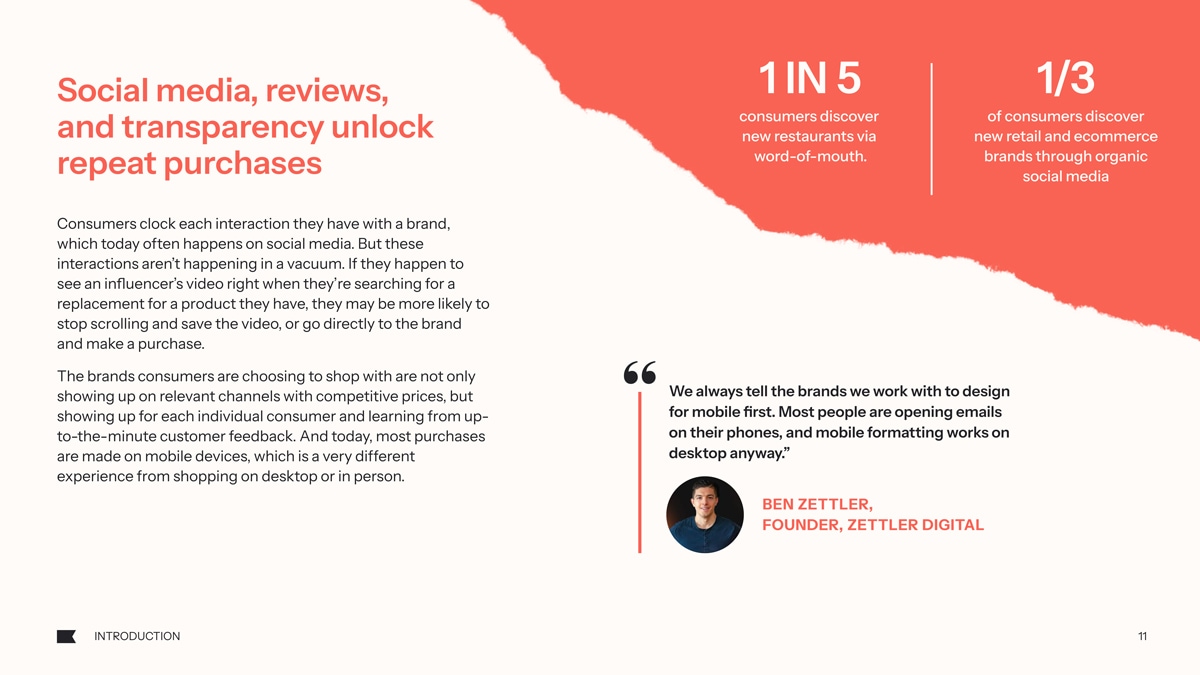Despite the rise of newer platforms and technologies, email continues to offer eCommerce businesses unmatched ROI, direct customer engagement, and measurable impact.
With over 4 billion daily email users and counting, the future of email marketing looks promising… but it’s going to look different, too.
As we look ahead to the next five years of email marketing, eCommerce businesses must prepare to embrace change, adapt to up-and-coming trends, and readily use innovations that are set to shape the industry.
In this blog, we’ll highlight emerging email marketing trends, our predictions for the ones that will stick, and how eCommerce businesses can future-proof their email marketing strategies.
The Current State of Email Marketing
Email marketing has proven itself a powerful and cost-effective tool for eCommerce brands looking to nurture leads, drive conversions, and maintain customer relationships.
The email marketing strategies of today have grown increasingly sophisticated, too, offering marketers the opportunity to send everything from automated drip campaigns to behavior-based targeting (and everything in between).
Ultimately, email’s continued dominance in the marketing scene is rooted in its flexibility and directness. Unlike other algorithm-controlled channels like social media, emails connect you directly to your audience through personalized, focused communications,
Yet, despite email marketing’s expert strategies and unmatched reach, consumer expectations continue to shift, and marketers need to be more strategic and creative than ever before.
That’s where email marketing innovations — A.K.A. the trends we predict will dominate the industry in the next five years — come into play.
4 Predicted Trends for the Next 5 Years
As technology and consumer demand continue to evolve, email marketing will have to evolve, too. Based on our observations of trends, innovations, and consumer interests, here are the top four trends we expect to shape the next five years of email marketing.
1. Hyper-Personalization with AI
Using AI for hyper-personalization enables eCommerce brands to streamline and optimize their email marketing efforts, from quickly analyzing customer data and segmenting audiences to crafting tailored messages and leveraging predictive analytics.
While the industry’s current AI stack is already revolutionizing email marketing by making data-driven, hyper-personalization achievable at scale, the future is even more promising.
Over the next five years, we predict that AI tools for personalization will become even stronger and more capable, offering eCommerce brands increasingly sophisticated algorithms and capabilities to reach their audiences better.
2. More Interactive Emails
Static, text-heavy emails are becoming a thing of the past. Today’s consumers are expecting to see more interactive, engaging elements in the emails they subscribe to, from embedded videos and image carousels, to quizzes and “add-to-cart” functionality — all without leaving their inbox.
These features not only boost engagement but also streamline the customer journey, and they’re quickly becoming a “must-have” in email marketing strategies, not just a “nice to have.”
Over the next five years, we predict highly engaging, interactive emails will become the baseline for eCommerce brands looking to connect with their audiences while improving metrics like click-through and conversion rates.
→ Learn more about the best types of email content to boost engagement
3. Enhanced Privacy and Security
With global data regulations tightening and customers demanding more protection and security than ever before, eCommerce brands will need to step up their commitment to compliance, not only to meet regulatory requirements but to build consumer trust.
Consent-based marketing is becoming the norm, requiring marketers to offer more transparency about consumer data and get explicit, continued consent from their audiences.
Over the next five years, we predict more tools will emerge to help eCommerce brands adhere to compliance laws, regulations, and best practices, making it easier to offer consumers the security they want.
→ Learn more about the dos and don’ts of email marketing compliance
4. Omnichannel Integration
Email marketing no longer exists in a silo. Seamlessly integrating email with SMS, push notifications, social media, and even chatbots is becoming the norm, creating unified customer experiences from beginning to end.
Creating an omnichannel marketing strategy will allow eCommerce brands to better coordinate their messaging across every touchpoint, creating a simple, cohesive customer experience.
Over the next five years, we predict more eCommerce brands will start to explore omnichannel integrations, not only elevating their email marketing efforts but improving (and streamlining) the entire customer journey.
→ Learn more about creating a seamless omnichannel marketing strategy
Challenges Ahead
While the future of email marketing holds promise and potential, it’s not without challenges.
There are several obstacles that eCommerce brands will have to figure out how to overcome in the next few years.
Navigating Privacy Regulations
Regulatory landscapes are shifting rapidly and constantly.
eCommerce brands will have to figure out how to comply with new rules while still delivering personalized, impactful content to their audiences. This adjustment will require eCommerce brands to operate with agility, flexibility, and transparency… or risk losing consumer trust.
Standing Out in the Inbox
Inbox competition is fierce, and it’s only going to get tougher.
With the increasing number of emails sent every day, it’s more challenging than ever to capture consumer attention. eCommerce brands will need to get creative with their email subject lines, preview texts, send times, and content to stand out among the crowd — and convert.
Balancing Automation and Human Touch
Automation boosts efficiency, but only when it’s used strategically.
An over-reliance on automation can lead to generic, impersonal messages. eCommerce brands will have to figure out how to strike the right balance between using automations for efficiency and sending authentic, humanized content that their audience actually wants to read.
How to Prepare for the Future
To stay ahead of the email marketing curve over the next few years, eCommerce brands will need to take several proactive steps.
Here are the top three things we recommend to prepare for the brand-new world of email marketing that’s on the horizon.
■ Invest in Emerging Technologies — From AI tools to real-time analytics platforms, emerging technologies can give your eCommerce brand a competitive edge. Investing early allows you to experiment, optimize, and scale effectively as these innovations become more common in the industry.
■ Build Flexible, Scalable Strategies — Email marketing strategies that work today might not work tomorrow. Adopting agile frameworks that allow your eCommerce brand to rapidly test and scale strategies ensures your email marketing efforts can grow (and adapt) at the same pace as your audience.
■ Stay Informed and Educated — Trends in the world of email marketing are constantly changing, and it’s up to eCommerce brands to stay informed. Subscribe to industry blogs, attend webinars, and engage with professional communities to stay educated on new practices, tools, and regulations.
Wrap Up
The future of email marketing is filled with potential… and complexity. As AI, interactivity, and cross-channel integration redefine what’s possible, eCommerce brands must be prepared to adjust their email marketing efforts quickly and thoughtfully.
Finding email marketing success in the next five years will hinge on your eCommerce brand’s ability to innovate while remaining customer-centric.
But by embracing change, prioritizing data ethics, and continuously optimizing your strategies, you can ensure your email marketing efforts remain not only relevant but indispensable.


